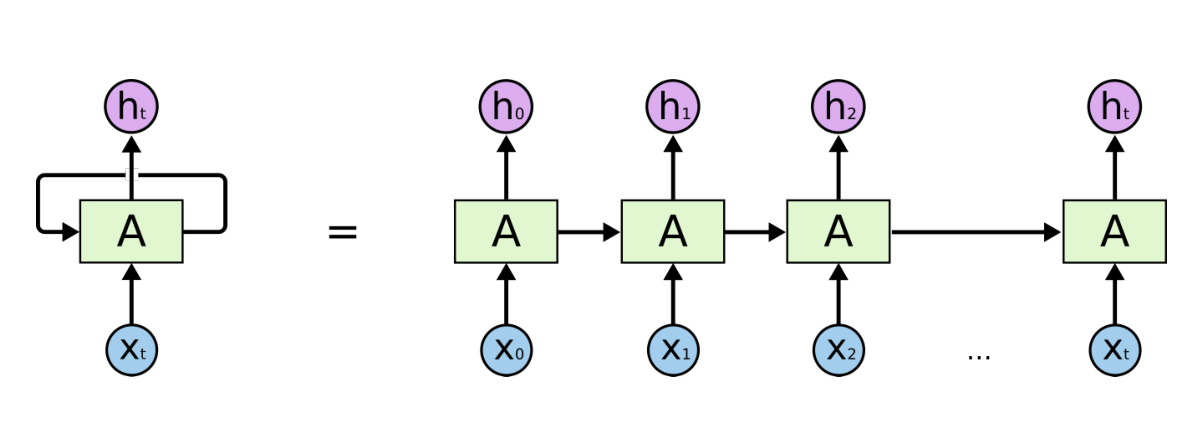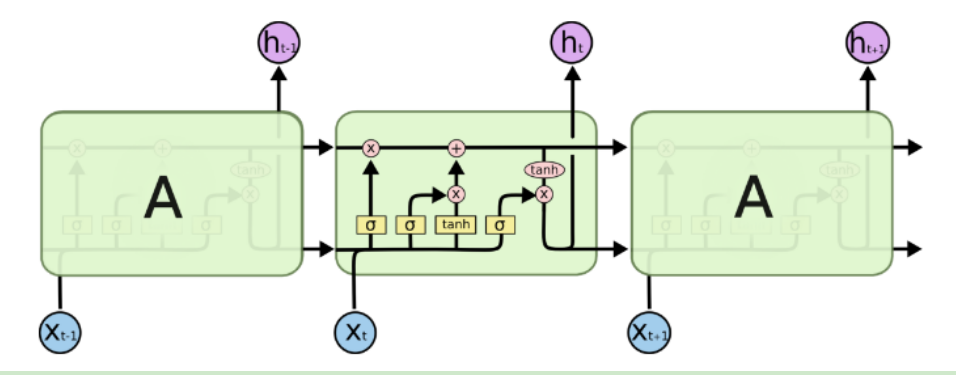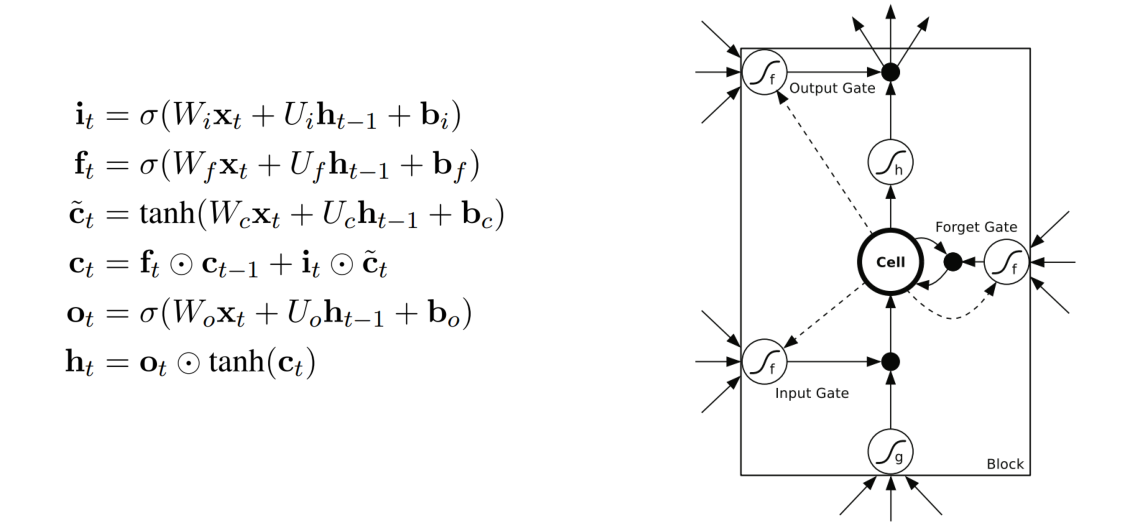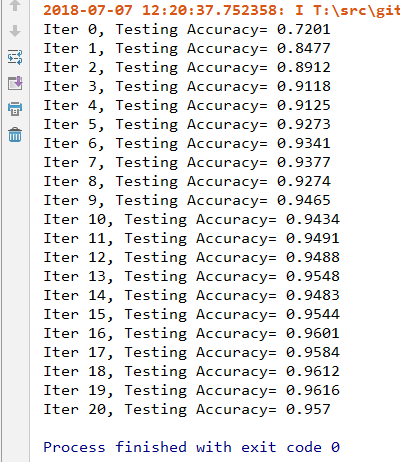1、RNN(Recurrent Neural Network)循环神经网络模型

详见RNN循环神经网络:https://www.cnblogs.com/pinard/p/6509630.html
2、LSTM(Long Short Term Memory)长短期记忆神经网络模型


详见LSTM长短期记忆神经网络:
http://www.cnblogs.com/pinard/p/6519110.html
3、LSTM长短期记忆神经网络处理Mnist数据集
|
1
2
3
4
5
6
7
8
9
10
11
12
13
14
15
16
17
18
19
20
21
22
23
24
25
26
27
28
29
30
31
32
33
34
35
36
37
38
39
40
41
42
43
44
45
46
47
48
49
50
51
52
53
54
55
56
57
58
59
|
import
tensorflow as tf
from
tensorflow.examples.tutorials.mnist import input_data
from
tensorflow.contrib import rnn
# 载入数据集
mnist
=
input_data.read_data_sets("MNIST_data/", one_hot=True)
# 输入图片是28*28
n_inputs
=
28 # 输入一行,一行有28个数据(28个像素点),即输入序列长度为28
max_time
=
28 # 一共28行
lstm_size
=
100 # 隐层单元
n_classes
=
10 # 10个分类
batch_size
=
50 # 每批次50个样本
n_batch
=
mnist.train.num_examples // batch_size # 计算一共有多少个批次
# 这里的none表示第一个维度可以是任意的长度
x
=
tf.placeholder(tf.float32, [None, 784])
# 正确的标签
y
=
tf.placeholder(tf.float32, [None, 10])
# 初始化权值
weights
=
tf.Variable(tf.truncated_normal([lstm_size, n_classes], stddev=0.1))
# 初始化偏置值
biases
=
tf.Variable(tf.constant(0.1, shape=[n_classes]))
# 定义RNN网络
def
RNN(X, weights, biases):
inputs
=
tf.reshape(X, [-1, max_time, n_inputs])
# 定义LSTM基本CELL
lstm_cell
=
rnn.BasicLSTMCell(lstm_size)
# final_state[0]是cell state
# final_state[1]是hidden_state
outputs, final_state
=
tf.nn.dynamic_rnn(lstm_cell, inputs, dtype=tf.float32)
results
=
tf.nn.softmax(tf.matmul(final_state[1], weights) + biases)
return
results
# 计算RNN的返回结果
prediction
=
RNN(x, weights, biases)
# 损失函数
cross_entropy
=
tf.reduce_mean(tf.nn.softmax_cross_entropy_with_logits(logits=prediction, labels=y))
# 使用AdamOptimizer进行优化
train_step
=
tf.train.AdamOptimizer(1e-4).minimize(cross_entropy)
# 结果存放在一个布尔型列表中
correct_prediction
=
tf.equal(tf.argmax(y, 1), tf.argmax(prediction, 1)) # argmax返回一维张量中最大的值所在的位置
# 求准确率
accuracy
=
tf.reduce_mean(tf.cast(correct_prediction, tf.float32)) # 把correct_prediction变为float32类型
# 初始化
init
=
tf.global_variables_initializer()
with tf.Session() as sess:
sess.run(init)
for
epoch in range(21):
for
batch in range(n_batch):
batch_xs, batch_ys
=
mnist.train.next_batch(batch_size)
sess.run(train_step, feed_dict
=
{x: batch_xs, y: batch_ys})
acc
=
sess.run(accuracy, feed_dict={x: mnist.test.images, y: mnist.test.labels})
print
(
"Iter "
+ str(epoch) + ", Testing Accuracy= " + str(acc))
|
结果为:
